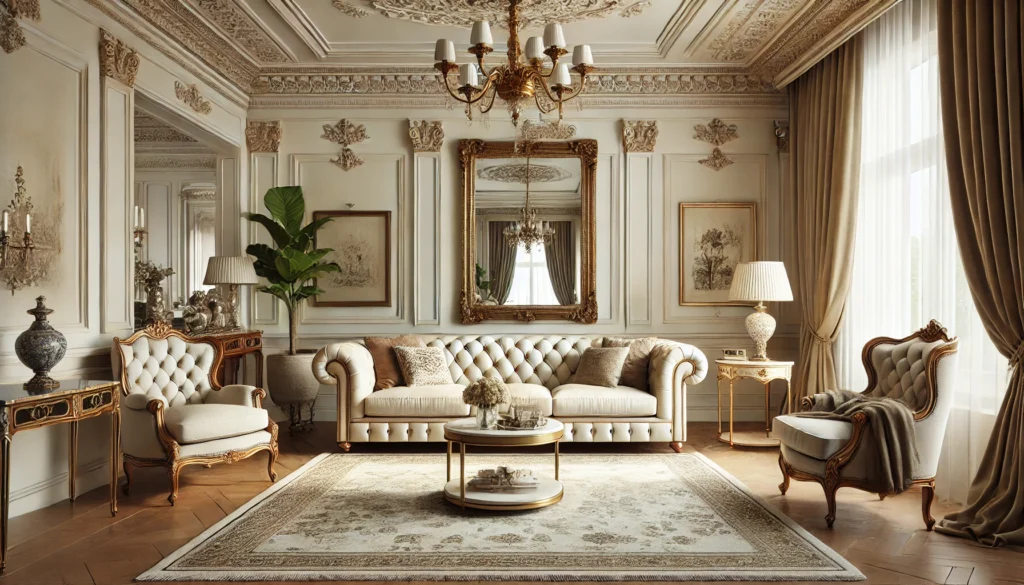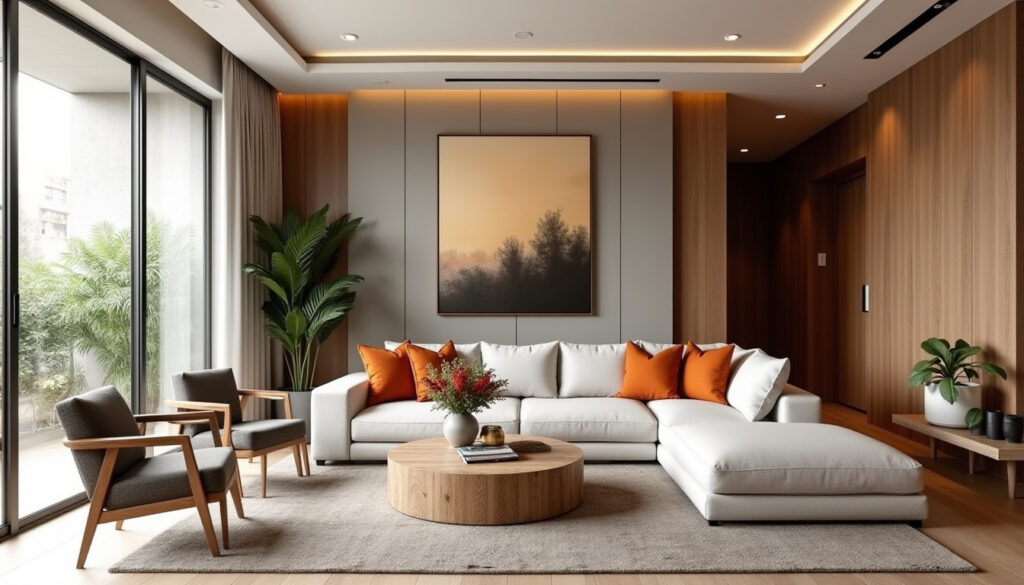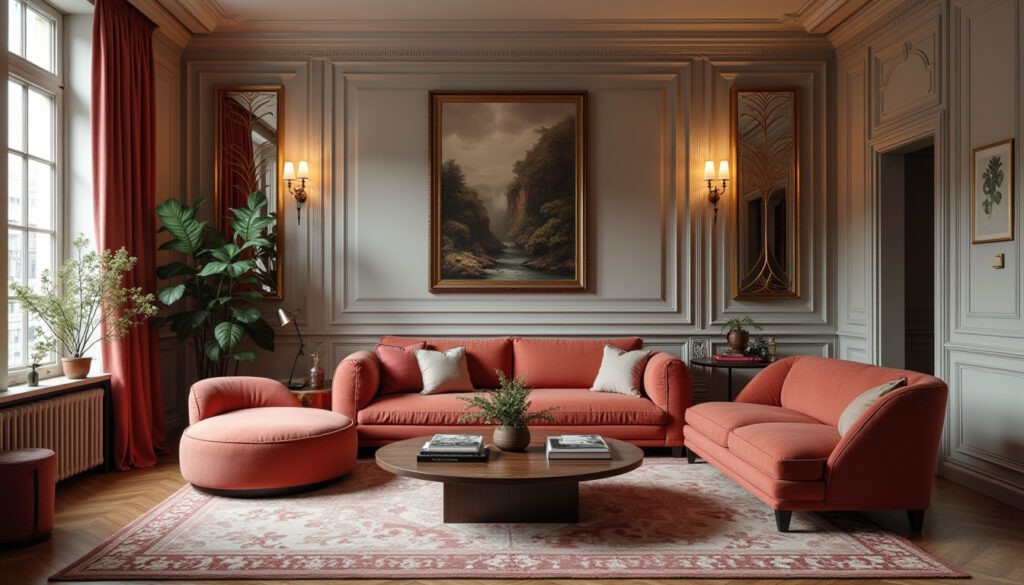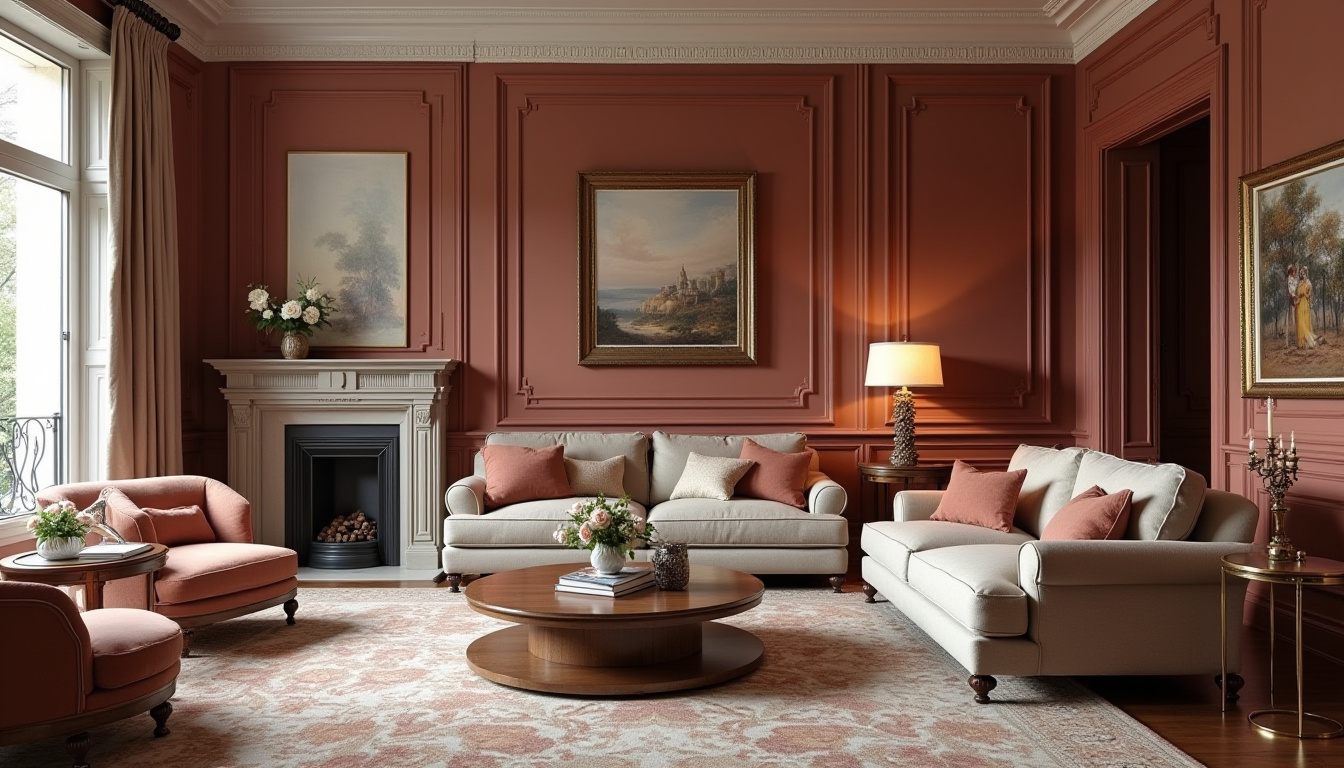Have you ever stepped into a grand, luxurious room and felt like you were transported back in time? Or perhaps you’ve been in a sleek, minimalist space that exuded elegance through simplicity? all of this to be achieved by Interior Design.
Interior design is more than just choosing colors and furniture—it’s a reflection of personality, taste, and lifestyle.While some people love the timeless sophistication of classic design, others prefer the clean lines and functionality of modern interiors. But what if you appreciate elements of both? Can you blend the two styles without creating a design disaster?
In this article, we’ll explore the key differences between classic and modern interior design, their defining features, and how to seamlessly combine both styles for a balanced, stylish look.

What Is Classic Interior Design?
Classic interior design takes inspiration from European architecture and decor from the 17th and 18th centuries. It focuses on elegance, symmetry, and intricate details, often creating a sense of grandeur and timeless beauty.
Key Features of Classic Interior Design
- Colors: Rich, warm tones like beige, gold, deep green, royal blue, and burgundy.
- Patterns and Decor: Ornate moldings, detailed ceilings, and carved wooden elements.
- Furniture: Large, statement pieces made from mahogany, walnut, or oak, often upholstered in luxurious fabrics like velvet or silk.
- Architectural Details: Soft curves, symmetrical layouts, and intricate carvings.
- Spaces Best Suited For: Classic interiors shine in spacious homes, mansions, luxury hotels, and high-end apartments. The style needs room to breathe to showcase its beauty fully.

What Is Modern Interior Design?
Unlike classic design, modern interiors focus on simplicity, functionality, and open spaces. This style emerged in the early 20th century, emphasizing clean lines, neutral palettes, and a clutter-free aesthetic.
Key Features of Modern Interior Design
- Colors: Neutral tones such as white, gray, black, and soft earth tones, with the occasional pop of color for contrast.
- Materials and Finishes: A mix of glass, steel, concrete, and natural wood, creating a sleek yet warm atmosphere.
- Furniture: Functional, minimalist pieces with geometric shapes and straight edges. Often features leather, smooth fabrics, and simple wooden finishes.
- Lighting: Maximizes natural light with large windows and incorporates LED and recessed lighting for a soft, inviting glow.
- Spaces Best Suited For: Perfect for urban apartments, small homes, offices, and contemporary living spacesthat prioritize functionality over decoration.
Classic vs. Modern: Which One Suits You Best?
1. Elegance vs. Practicality
- If you love luxury, rich textures, and sophisticated details, classic design is ideal.
- If you prefer clean, simple spaces with minimal clutter, modern design is the way to go.
2. Ornate vs. Minimalist Details
- Classic interiors feature intricate detailing and decorative elements.
- Modern interiors focus on sleek, uncluttered spaces with sharp lines and smooth finishes.
3. Color and Material Choices
- Classic design incorporates deep wood tones, heavy fabrics, and gold or bronze accents.
- Modern interiors favor light wood, glass, and matte metals like brushed steel or black iron.

How to Combine Classic and Modern Styles for a Balanced Look
If you appreciate both the warmth of classic design and the simplicity of modern aesthetics, you can successfully merge the two styles for a sophisticated yet contemporary look.
1. Use a Neutral Base with Classic Accents
- Start with modern, neutral walls in shades of white, gray, or taupe.
- Add classic touches like gold-framed mirrors, intricate moldings, or antique furniture pieces to create a subtle contrast.
2. Mix Classic and Modern Furniture Pieces
- Pair a sleek, modern sofa with a traditional wooden coffee table.
- Use classic dining chairs with a modern glass or marble dining table.
3. Combine Classic Lighting with Modern Elements
- Install a crystal chandelier in a room with minimalist furniture for a striking effect.
- Use hidden LED lighting to add a modern touch to ornate ceiling moldings.
4. Blend Traditional and Contemporary Textures
- Classic design relies on rich fabrics like velvet, silk, and brocade.
- Modern interiors use leather, linen, and soft cotton.
- A modern sectional sofa with classic velvet throw pillows creates a sophisticated yet relaxed ambiance.
5. Incorporate Timeless Statement Pieces
- Use a vintage Persian rug in a modern space for a touch of history.
- Combine an antique wooden console with a contemporary metal-framed mirror.
How Zory.ai Can Help You Find the Perfect Furniture?
Choosing the perfect furniture for a blended classic-modern interior can be overwhelming, but Zory ai simplifies the process with:
- A curated collection of furniture and decor that seamlessly combines both styles.
- AI-powered recommendations that match your personal taste and space requirements.
- Augmented reality previews, allowing you to see how classic and modern pieces fit together in your home before purchasing.
Conclusion
Both classic and modern interior design offer unique advantages—classic design is all about timeless elegance, while modern design focuses on functionality and simplicity. The best part? You don’t have to choose just one! By carefully blending elements from both styles, you can create a home that is stylish, balanced, and uniquely yours.
With Zory, finding the perfect furniture and design inspiration has never been easier. Explore our collections, receive AI-powered recommendations, and transform your space with the perfect blend of classic and modern!
